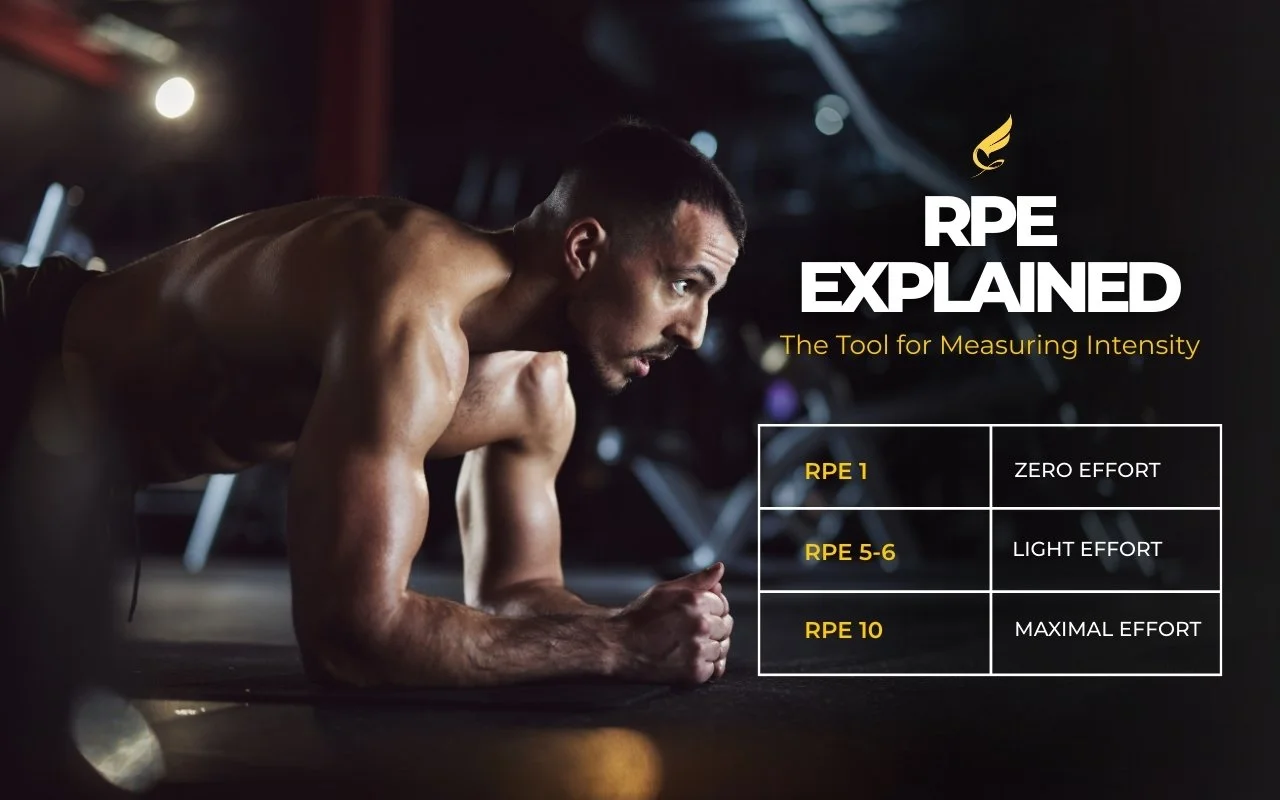Are You Training Hard Enough? A Guide to Intensity and RPE for Real Results
You've seen them in the gym. The person who is consistently there, day after day, going through the motions of their workout. They lift the weights, they complete their sets, but months later, they look exactly the same. They aren't making progress.
What are they missing? The answer, almost always, is intensity.
Workout intensity is the single most important factor for stimulating muscle growth and strength gains. Simply showing up and lifting weights is not enough to force your body to change. You must challenge it. This is a key component of any successful fitness journey.
But "training hard" is a vague concept. How do you measure your exercise intensity? How do you know if you're pushing hard enough to hit your fitness goals, but not so hard that you risk injury? This is where a simple but powerful tool called the Rate of Perceived Exertion (RPE) comes in to help you train smarter.
What is Training Intensity?
In the context of resistance training, training intensity doesn't mean screaming and throwing weights around. It simply refers to how challenging a set feels in relation to your maximum effort. It’s the difference between lifting a weight for 10 reps when you could have done 20, and lifting it for 10 reps when you could have only done 11. That final, difficult rep is where the magic happens.
The Tool for Measuring Intensity: RPE Explained
The Rate of Perceived Exertion (RPE) scale is a simple way to measure your intensity on a scale from 1 to 10. Originally developed by Swedish researcher Gunnar Borg (as the Borg RPE Scale), it’s a subjective measure that helps you auto-regulate your training based on how your body feels on a given day, accounting for factors like sleep and your mental state.
Unlike objective data like your heart rate from a fitness watch, the RPE scale is a personal assessment of your perceived effort.
Think of it like this:
RPE 1: Lying on the couch. Zero effort.
RPE 5-6: A light effort, like most warm-ups. The weight feels light, and you could do many more reps.
RPE 10: Maximum possible effort or maximal effort. You could not have completed one more rep, no matter what. This is true muscular failure.
The "Money Zone" for Growth: Training at RPE 7-9
For the vast majority of your workouts, especially for hypertrophy training, the goal is not to train to RPE 10 on every single set. That's a bad idea that can lead to excessive muscle fatigue and burnout. The sweet spot for building muscle and strength is the RPE 7-9 range.
We can also think about this in terms of Reps in Reserve (RIR).
RPE 7 (3 Reps in Reserve): You finish your set feeling like you could have done 3 more reps with good form. This is a great intensity for isolation movements or on a recovery day.
RPE 8 (2 Reps in Reserve): You finish your set feeling like you could have done 2 more reps. This is the bread and butter of most effective training programs. It's challenging and stimulates growth without being excessively draining.
RPE 9 (1 Rep in Reserve): You finish your set knowing you could have only done one more rep. This is very high intensity and is an excellent tool for your heaviest sets on big heavy lifts like the bench press.
Training consistently in this RPE 7-9 "money zone" ensures that every set you perform is challenging enough to signal your body that it needs to adapt and get stronger.
How to Use RPE in Your Workout
Let's say your program calls for a set of 8 reps on the dumbbell shoulder press.
You pick a weight and perform the 8 reps. At the end of the set, you ask yourself, "How many more reps could I have done with perfect form?"
If the answer is "4 or more," the weight is too light. Your RPE was too low.
If the answer is "1 or 2," you've nailed it. You're at an RPE of 8-9.
If you barely managed to get the 8th rep and couldn't have done another, you're at an RPE of 10.
Based on this feedback, you can adjust the training load for your next set—either using the same weight or a heavier one—to ensure you stay in that productive 7-9 range and don't miss reps unnecessarily. This is a fantastic way of tracking progress beyond just the numbers in a notebook.
Conclusion: Intensity is a Skill
Learning to train with the right intensity is a skill. It requires you to be honest with yourself and to learn the difference between discomfort and true failure. Integrating RPE into your fitness routine is the most effective tool for developing this skill.
Stop just going through the motions. Start training with purpose and intensity, and you will finally unlock the results you've been working for and improve your overall fitness.
To see how intensity fits into a complete workout plan, you can read our foundational article on this topic.
Click Here to Read The Ultimate Guide to Designing an Effective Workout Program






